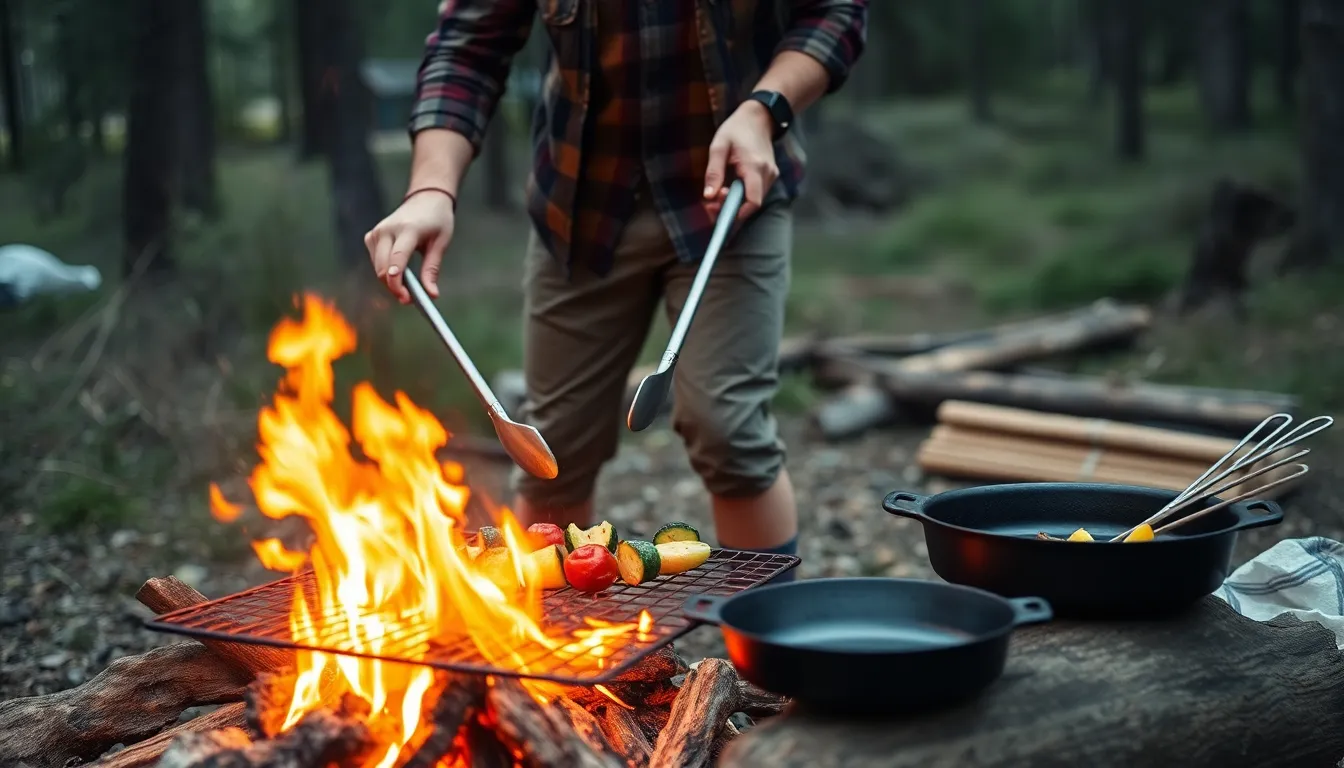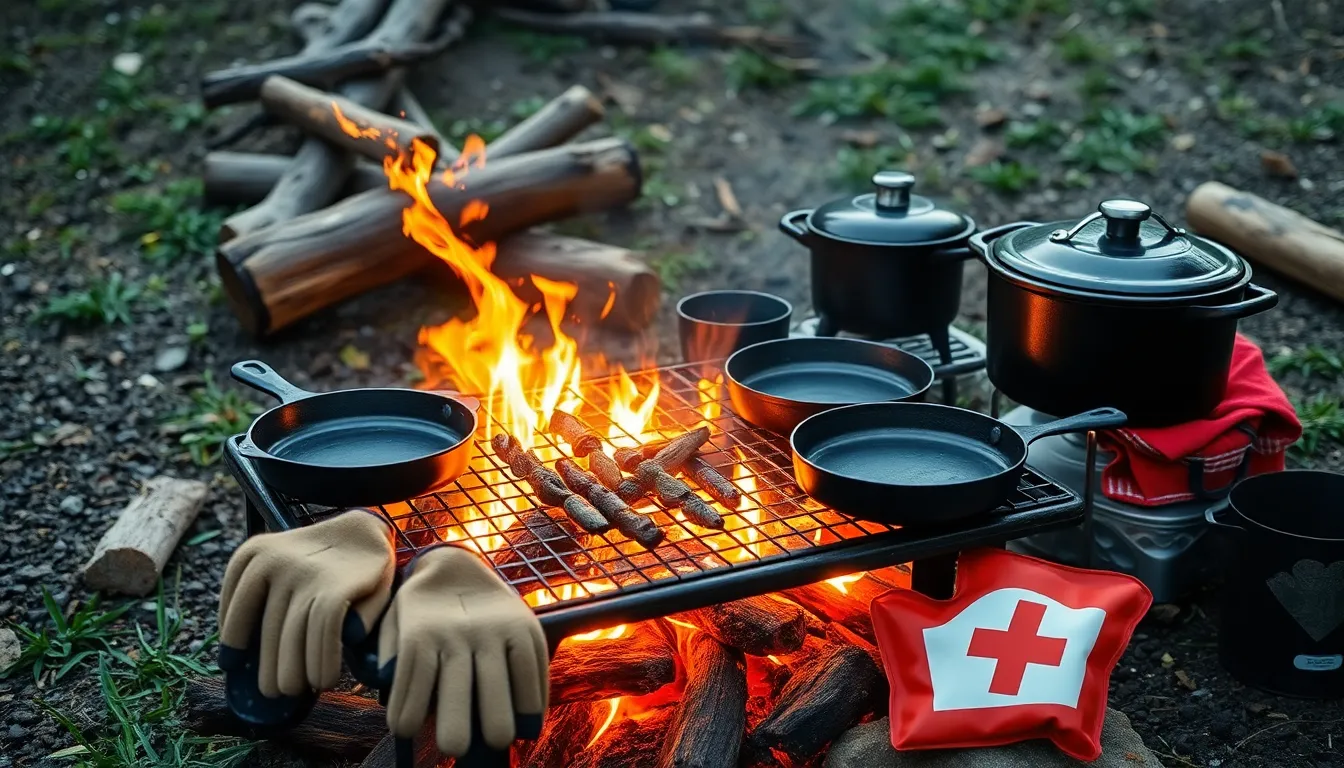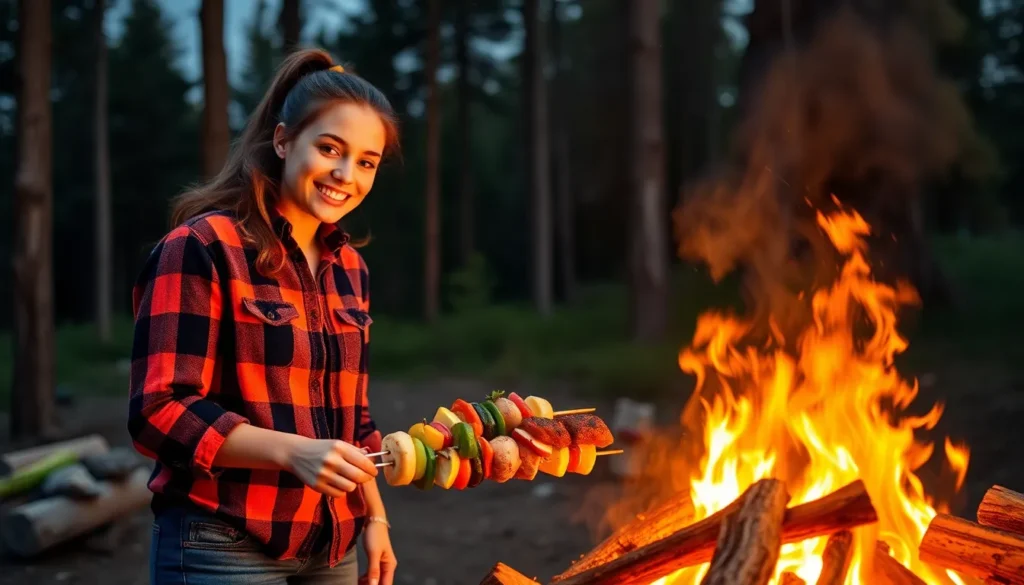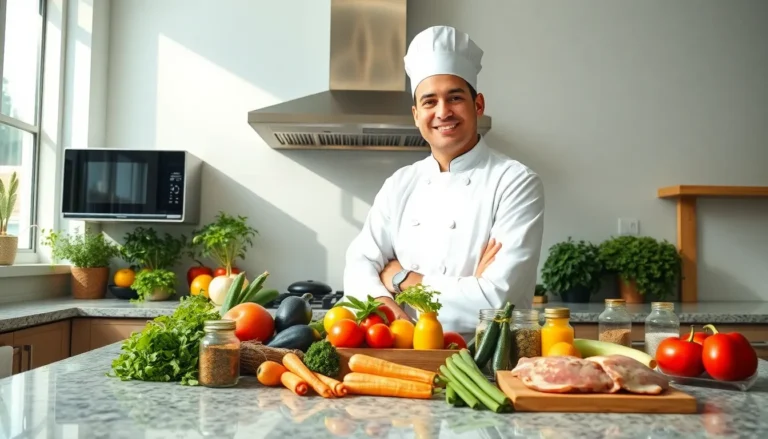Table of Contents
ToggleGather ‘round the fire, folks! Campfire cooking isn’t just about roasting marshmallows and singing off-key; it’s an adventure that takes outdoor dining to a whole new level. Imagine sizzling steaks, flavorful veggies, and that unmistakable smoky aroma wafting through the air. With the right techniques, anyone can transform a simple campfire into a gourmet kitchen under the stars.
Overview of Campfire Cooking Techniques
Campfire cooking incorporates various methods to prepare meals outdoors. Skewering food on sticks or metal rods represents one of the most popular techniques for cooking over an open flame. This method suits meats, vegetables, and even some fruits, providing a hands-on experience.
Building a fire in a designated fire pit or a stone circle ensures safety and effectiveness. Once established, maintaining the fire allows for slow cooking or high-temperature grilling. Direct heat cooking encourages searing for meats, while indirect heat is ideal for baking or slow-roasting.
Wrapping food in aluminum foil offers an easy way to cook while preventing mess. Placing these packets in the coals cooks them evenly. Many campers prefer this method for potatoes, fish, and pre-marinated meats.
Using a Dutch oven enables versatile cooking styles. This heavy pot retains heat well, making it perfect for stews, casseroles, or bread. Placing it at the edge of the fire or burying it in coals provides even cooking.
Another technique, using a grill grate over the fire, allows for more control over the cooking process. Simple to set up, this method works well for grilling meats and vegetables.
Smoke adds flavor to various dishes, enhancing meats and even some vegetables. This technique involves positioning food near, but not directly over, the flames. The resulting smoky taste elevates many campfire meals.
Incorporating these techniques enhances the campfire cooking experience. Each method offers unique flavors and cooking styles, transforming simple ingredients into delicious meals.
Essential Gear for Campfire Cooking


Having the right gear makes campfire cooking effective and enjoyable. Essential items enhance food preparation and promote safety.
Cooking Tools
Reliable cooking tools ensure successful meal preparation over a campfire. Cast iron skillets distribute heat evenly for optimal frying. Long-handled tongs facilitate flipping meats and vegetables without burns. Grill grates offer stability while allowing for even cooking. For roasting, skewers made of metal or bamboo work well with various food types. Additionally, a Dutch oven handles stews, soups, and even baking with ease. Non-stick aluminum foil also simplifies cooking and cleanup, especially for delicate items like fish. Each tool plays a crucial role in creating culinary creations over an open flame.
Safety Equipment
Safety equipment protects against accidents during campfire cooking. Heat-resistant gloves prevent burns when handling hot cookware. A fire extinguisher or bucket of water serves as a precaution against unexpected flare-ups. First aid kits address minor injuries from cuts or burns. Portable grills enhance cooking safety by offering a controlled environment. Additionally, using a fire ring or designated area ensures the fire remains contained. Eye protection can guard against sparks while cooking. By prioritizing safety gear, campers maximize their enjoyment and minimize risks, allowing for a worry-free cooking experience.
Types of Campfire Cooking Techniques
Various campfire cooking techniques elevate outdoor meals. Techniques range from direct heat to foil packet cooking, each offering unique flavors and textures.
Direct Heat Cooking
Direct heat cooking employs flames or hot coals to sear food quickly. This method works well for items needing a crispy exterior, such as meats and vegetables. Skewers facilitate cooking over the flames, allowing for even distribution of heat. Chefs can rotate food frequently to achieve optimal cooking. Precise timing ensures a delicious char without burning, creating a satisfying meal. This fast approach captures bold flavors and enhances overall dining experience around the campfire.
Indirect Heat Cooking
Indirect heat cooking surrounds food with warmth, rather than placing it directly over flames. This technique suits larger cuts of meat or dishes requiring longer cooking times. Campers use Dutch ovens or grill grates to maintain consistent temperatures. Prepare meals like stews or casseroles with this method, allowing flavors to meld beautifully. Additionally, this approach prevents charring or burning while achieving tender results. With careful temperature management, participants can enjoy hearty, satisfying dishes.
Foil Packet Cooking
Foil packet cooking offers simplicity and convenience while minimizing mess. Wrapping food, such as meats and vegetables, in aluminum foil creates a steam effect, retaining moisture and flavor. Chefs can add seasonings directly into the packet to enhance taste. Placing packets near the fire ensures even cooking, typically taking 20 to 30 minutes. This method works well for camping, providing easy cleanup. Many enjoy the versatility of choosing ingredients while preparing delicious, individualized meals.
Tips for Successful Campfire Cooking
Successful campfire cooking combines preparation and fire management for great results. These tips enhance the overall experience and ensure delicious meals.
Preparing Ingredients
Start by cutting vegetables and marinating meats at home. This approach saves time and effort while camping. Pack ingredients in resealable bags for freshness and ease of transport. Incorporate seasonings to enhance flavors. Pre-cooking certain items, like potatoes or rice, shortens cooking time at the campsite. Utilizing skewers for meats and vegetables simplifies the cooking process. A variety of colorful ingredients not only looks appealing but also adds different flavors. Finally, assemble meal kits at home for an organized and efficient cooking experience.
Managing the Fire
Monitor the fire closely to maintain the ideal cooking temperature. Build a base with dry kindling and larger wood to keep the flames steady. Add wood gradually to avoid excessive heat. Different cooking methods require different fire stages; a smaller flame works well for grilling, while a larger flame suits searing. Arrange charcoal briquettes in a circle for consistent heat when using a grill grate. Use long-handled tools to manage food safely and reduce the risk of burns. Lastly, ensure a water source or bucket of sand is nearby for emergency situations.








